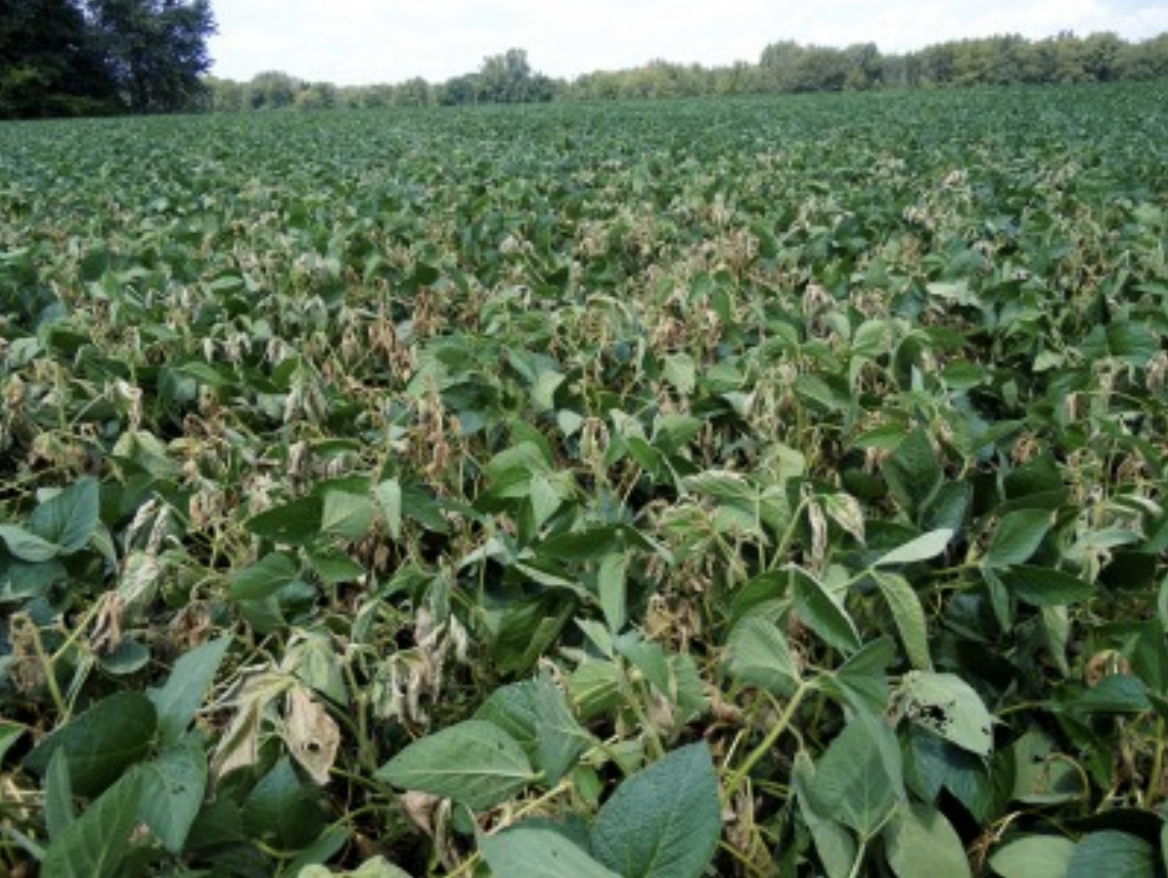Controlling Foliar Fungal Infection
Foliar diseases caused by fungal infection can create massive losses in yields. In soybeans, white mold yield losses can range from three to five bushels per acre for every 10% of plants infected by disease. In corn, leaf damage caused by gray leaf spot reduces the energy available to the plant to grow grain, while increased stalk lodging complicates harvest – both causes of huge yield losses. In today’s blog, we’re exploring how fungal disease occurs, and how growers can prevent and manage these costly, damaging infections.
What Increases Risk of Foliar Fungal Infections in Corn and Soybeans?
There are certain environmental factors and planting practices that create favorable conditions for fungal diseases in corn and soybeans:
· Prolonged periods of dew, fog and cloudy weather
· Free moisture on leaves for 12+ hours
· Frequent rain at flowering and pod development (soybeans)
· Early canopy closure/dense canopy at flowering (soybeans)
· Continuous planting (corn-on-corn, soybean-on-soybean)
· Residue left above soil surface throughout year
Practices to Reduce and Address Fungal Infections in Crops:
Planting practices can be adjusted and may provide more benefits than just fungal control. For example, crop rotation is also considered an effective management against various damaging pests.
Growers can also carefully select varieties with lower susceptibility to fungal infections. Talk with your dealer or agronomist to choose hybrids and varieties with the best genetic protection for the growing region.
Unfortunately, certain factors such as weather are out of a grower’s control. Fortunately, there are crop inputs, like those available from Streamline Ag, designed to be preventative and curative.
How Fungicides Fight Back Against Fungal Disease
When cultural practices and smart variety selection aren’t enough, control with fungicides is another valuable tool in the grower’s toolbox to fight back against costly damage from fungal disease.
Zolera FX –This preventative and curative fungicide uses two modes of action through Fluoxastrobin and Tetraconazole. Fluoxastrobin inhibits fungal respiration, stops sporulation and reduces ethylene production to stop crops from speeding through the end of the life cycle and reducing grain production. Tetraconazole is curative ingredient which also slows the pace of disease spread. The ingredients in this fungicide are shown to provide maximum protection from diseases like gray leaf spot and tar spot* in corn, and white mold in soybeans.
VacciPlant – Laminarin, a marine extract from brown algae contains natural anti-fungal agents. Laminarin induces phenolic acid production – without needing stress and drawing valuable energy from the plant. VacciPlant regulates ethylene production to prevent shortened grain fill These ingredients protect against a wide range of diseases – including tar spot and gray leaf spot in corn.
Take a Multi-Pronged Approach for Your Most Successful Season
Combining cultural planting practices, smart hybrid choices, and using fungicides together can help growers achieve the best defense against yield losses due to fungal disease.
*FIFRA Section 2(ee) recommendation



